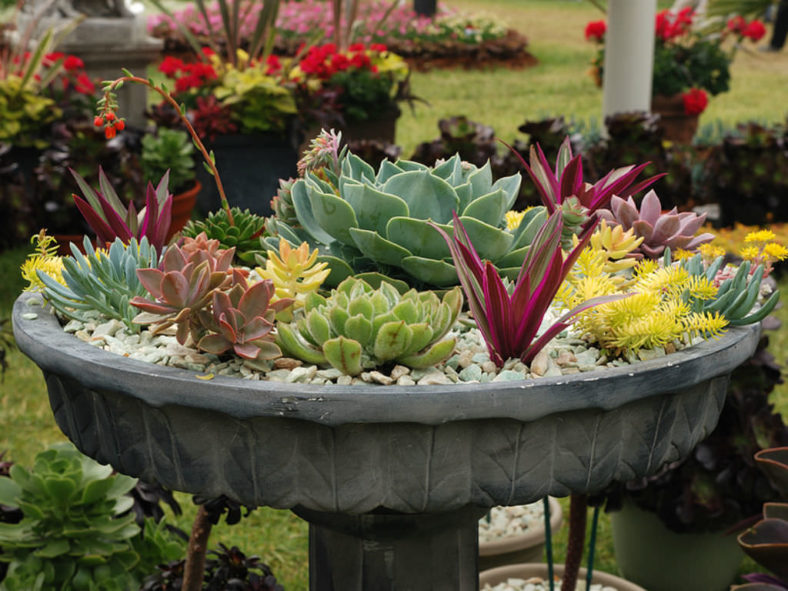Succulents thrive in hot, dry conditions that mimic their natural, arid habitats. In addition to being well-suited to harsh garden conditions, succulents look great when planted together in containers, making them an excellent choice for decorating your outdoor entertaining areas or as a gift.
They also work well planted into a vertical garden mounted in a warm sunny spot. Large succulents, such as Agaves and Yuccas, can be planted to create a bold statement in a large container as focal points in a garden.
Selecting Succulents
Rosette-forming succulents, such as Echeveria, Sedum, and Sempervivum, are well suited to containers as they are naturally compact. Also, try Senecio, Lithops, and Portulaca. Small cacti can also be included in a succulent garden.
For a larger container, select Aeonium, Crassula, Portulacaria, or Kalanchoe. For a garden effect, arrange a collection of pots of different heights, each planted with a different succulent.
Agave attenuata is a top choice for large containers or container groupings. Where spines are not an issue, Echinocactus makes beautiful container plants.

Getting Started
Select several plants that complement each other but offer a contrast in plant shape, texture, and color. To create a garden in a single container, choose a wide but shallow pot with drainage holes in the base. Fill it with a potting soil mix for succulents, and then water it thoroughly. Ensure the water drains away, leaving the mix moist but not wet. Next, place the plants in position, still in their pots, and arrange them to create the best effect.
Once you're happy with the picture you've created, remove each plant from its container and place it in its new position. Handle cacti with tongs, a piece of cardboard, or a folded newspaper to avoid contact with their spines.
Firm the plants into the potting soil, water gently, then add a layer of fine gravel as a mulch.
Caring for Your Collection
Although these plants tolerate dry conditions, they will establish more successfully with regular watering. Allow the soil to dry out between waterings. Reduce watering in winter, particularly in cold areas, but resume it in spring as plants begin to grow.
Inspect plants regularly and remove debris, such as fallen leaves or twigs. Keep plants in check by removing unwanted growth and trimming away damaged or discolored leaves. Some growers also remove the flower stems to maintain the leafy effect of the planting. If a plant gets too big for its position, remove it and replace it with a smaller specimen.
These plants do not require high fertilizer levels but can be feed once a year in spring with slow-release plant food.
In frost-prone areas, place your succulent gardens in a sheltered spot, such as beside a wall or patio. Although they are sun-loving, cacti and succulents tolerate light shade.
Source: flowerpower.com.au
Links
- Succupedia: Browse succulents by Scientific Name, Common Name, Genus, Family, USDA Hardiness Zone, Origin, or cacti by Genus